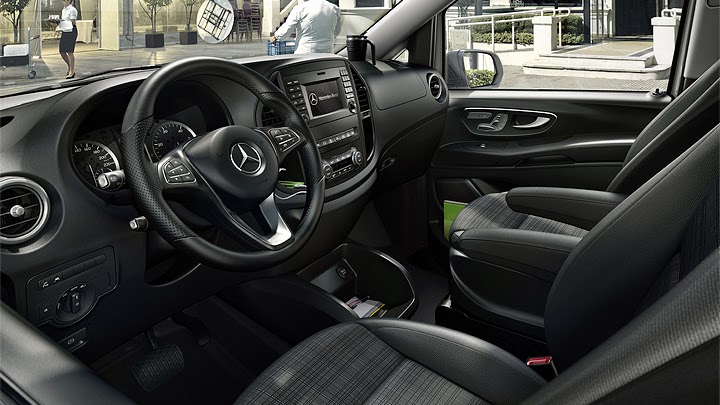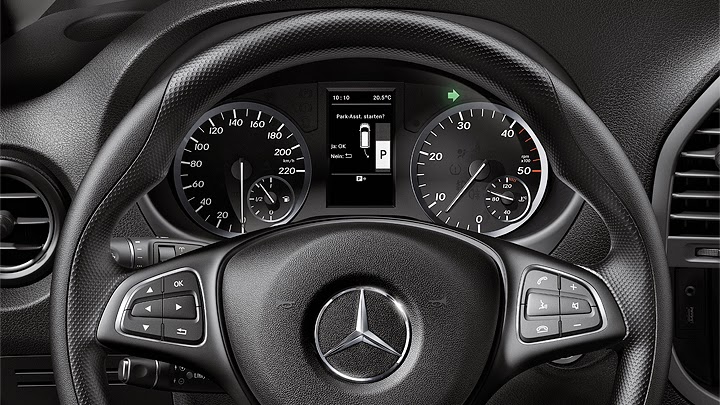
Although Mercedes has been very successful with almost all of its commercial vans, with sales claimed to have risen in Western Europe, China and United States, there is always room for improvements. Investing on a clearer image for each member of a lineup is important because it helps to create a better connection between customer and vehicle. Even if these are actually multiple variations from the same one, it is possible to differentiate them with visual accessories, internal equipments and types of engines, not to mention the type of advertisement each one will have – fancier cars are usually shown with emotional aspects, while cheaper ones highlight prices and technical data. The best way to conclude this by giving each one its own name.
Vito’s first generation was sold as a more accessible alternative to V-Class, but the latter was renamed Viano for their second phase. However, since this one returned with the original name only in some markets, in 2011, now all three were being offered at the same time. But their latest iteration started to put an end on this. They all still share many mechanical parts, but everything that is “visible” for the customer was separated. V-Class became the biggest option for passengers, with bigger focus on luxury. Sprinter remains as the biggest work vehicle. Vito, in turn, became the mid-size work vehicle, with no urban equivalent so far. Citan is still Mercedes’ smallest work van, and has B-Class as its urban “counterpart”.










Mercedes’ plan is to “conquer new markets, such as North and Latin America, with the new Vito”. Therefore, the vehicle was given a series of important improvements. The design, as usual, did not receive many of them. But it is also true that it looks much better than its predecessor. Not only do the automaker’s current rules appear once again, as they were also much better applied: that smiling lower grille and those weird headlights were replaced with a sleeker set. Sides and rear could never feature too many innovations because the commercial use imposes some dimension and shape requirements on them. But it is still noteworthy that the tail lights were reduced to a normal size. These and the “C” columns show a clear inspiration on Citan.
Since the overall shape was not changed, Vito does not offer significant changes when it comes to internal room. What Mercedes prefers to highlight is that it became much more efficient. There will be a new BlueEfficiency package which comes as optional or standard according to the version (basically, these groups are Vito’s cheaper and more expensive trim levels), and is claimed to have reduced the NEDC consumption in 20 percent, speaking of the diesel engines. It is interesting to notice that Vito will offer both front, rear and all-wheel-drive systems: the first works as the entry-level option, the second goes for those who work with trailers and heavy loads, and the third is recommended in “tough driving conditions and on unpaved roads”.










Vito also wants to be the segment reference when it comes to safety. There will be several electronic systems as standard, like Attention Assist, Crosswind Assist (compensates for strong wind gusts), tire pressure monitor and seatbelt warning for both front passengers. As optionals, Active Parking, Blind Spot, Collision Prevention and Lane Keeping provide enough assistance so as to keep to a minimum the chances of using the up to eight airbags. It will be also possible to replace the standard halogen lights with the Intelligent Light System. It is composed by LEDs for blinkers, daytime, high and low beams and cornering lights, which allows the car to deliver an optimal beam according to the car’s speed and to the road on which it is travelling.
The powertrain, as usual, will only burn diesel. Those trim levels with front-wheel-drive will be combined to the 109 CDI, which is a 1.6L unit and reaches 88 hp or 114 hp. If your Vito use either rear or all-wheel-drive, it will be powered by the 119 CDI, which is a 2.1L propeller with 136 hp, 163 hp or 190 hp. Mercedes also states that the latter uses BlueTEC technologies, in order to be “the first van in its segment to use a Euro 6 engine”. A six-speed manual will be the standard transmission, but it can be upgraded with a seven-speed automatic. The all-new Vito will go on sale next October. In Germany, the panel van with 109 CDI will start at €17,990. It is expected that Latin America will have it produced in Argentina.